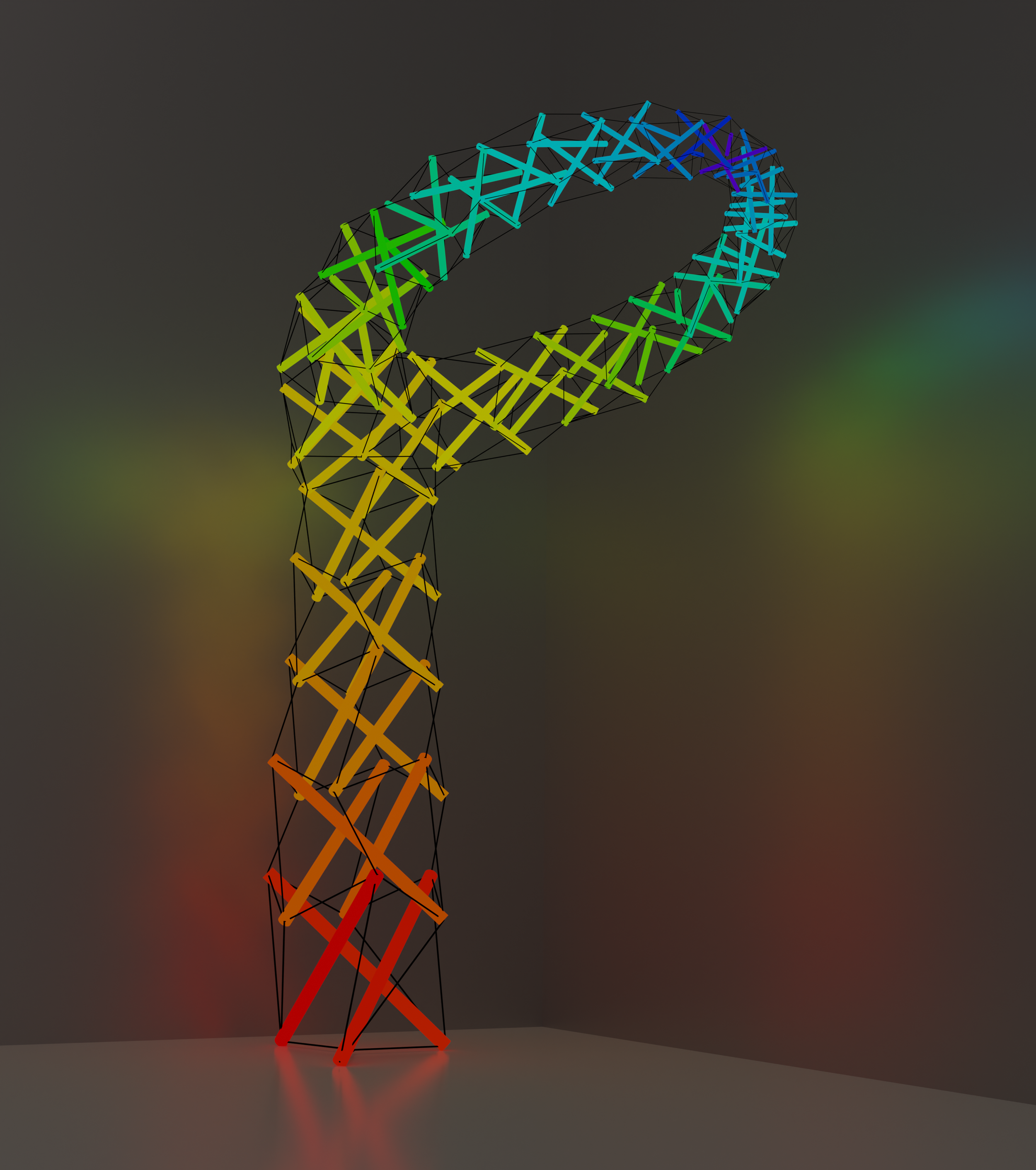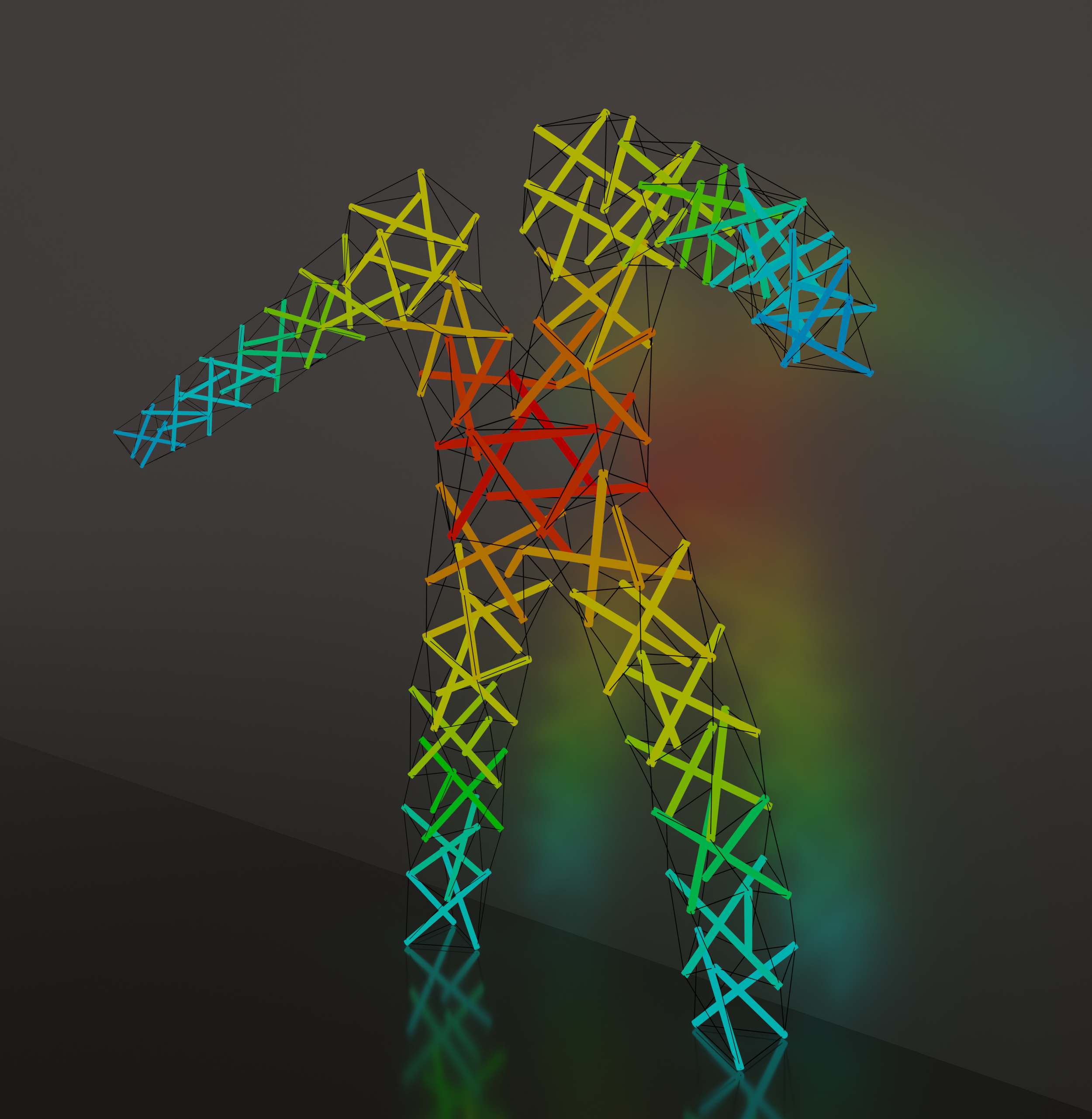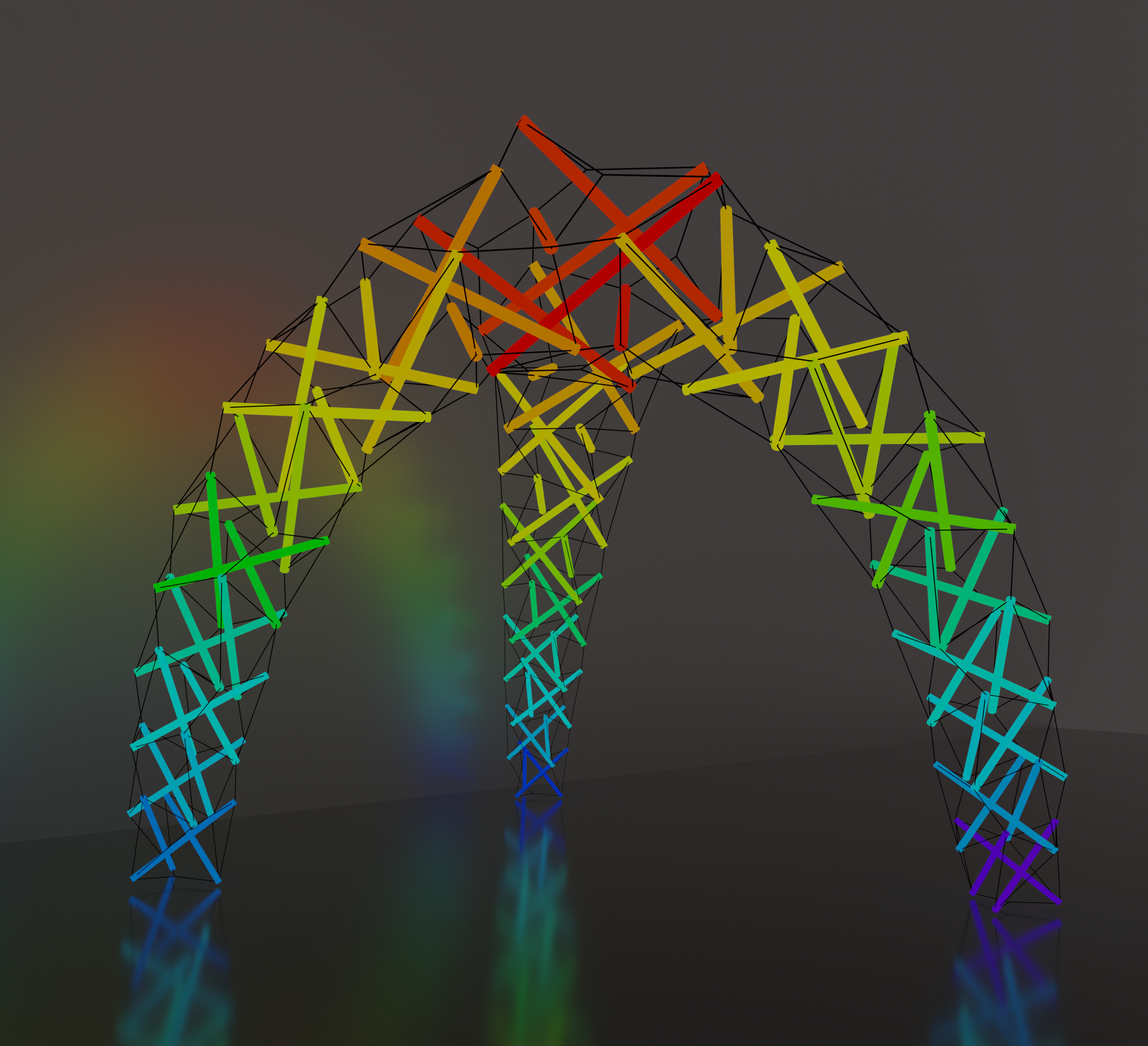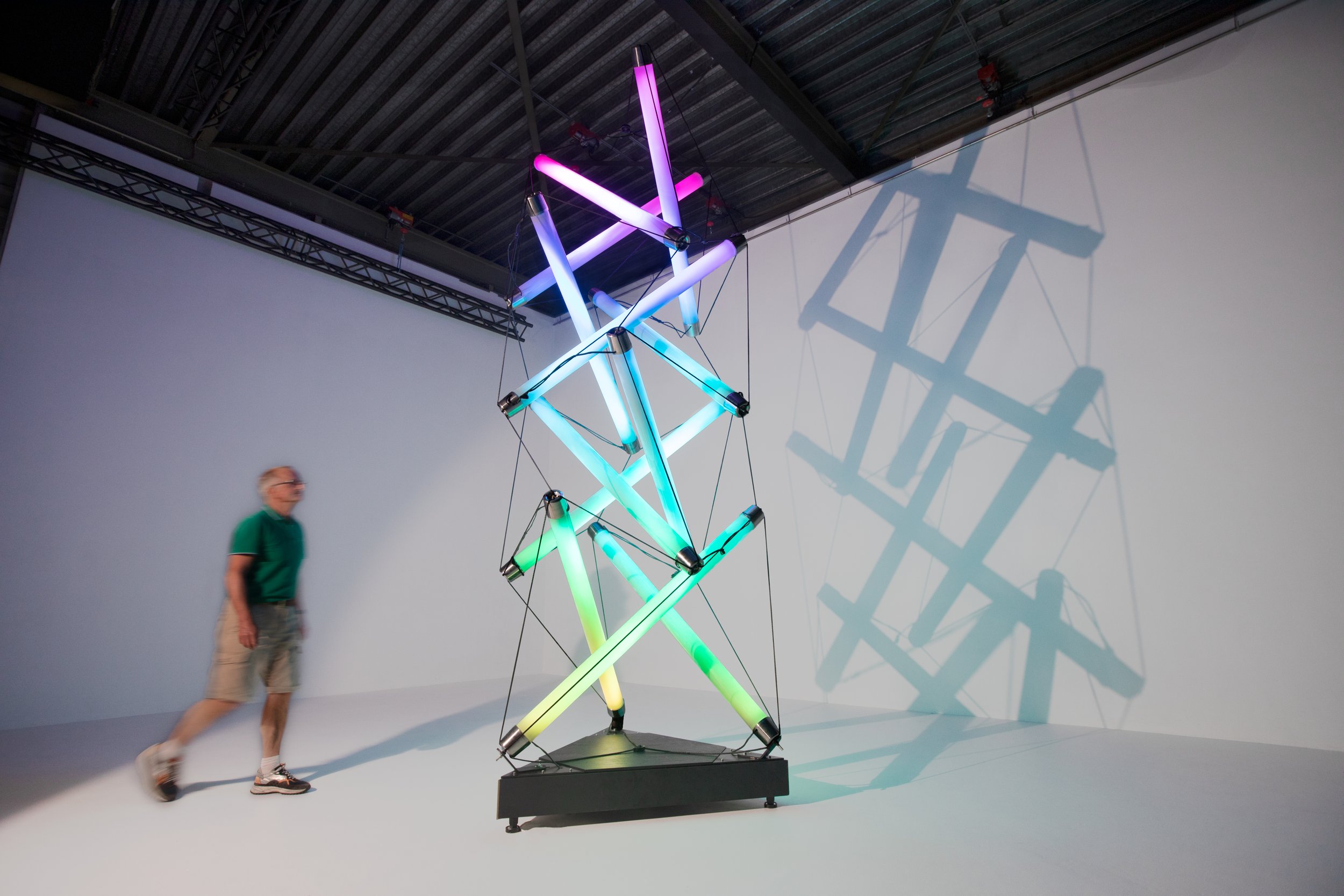
Tensegrity Tower

Tensegrity Tower
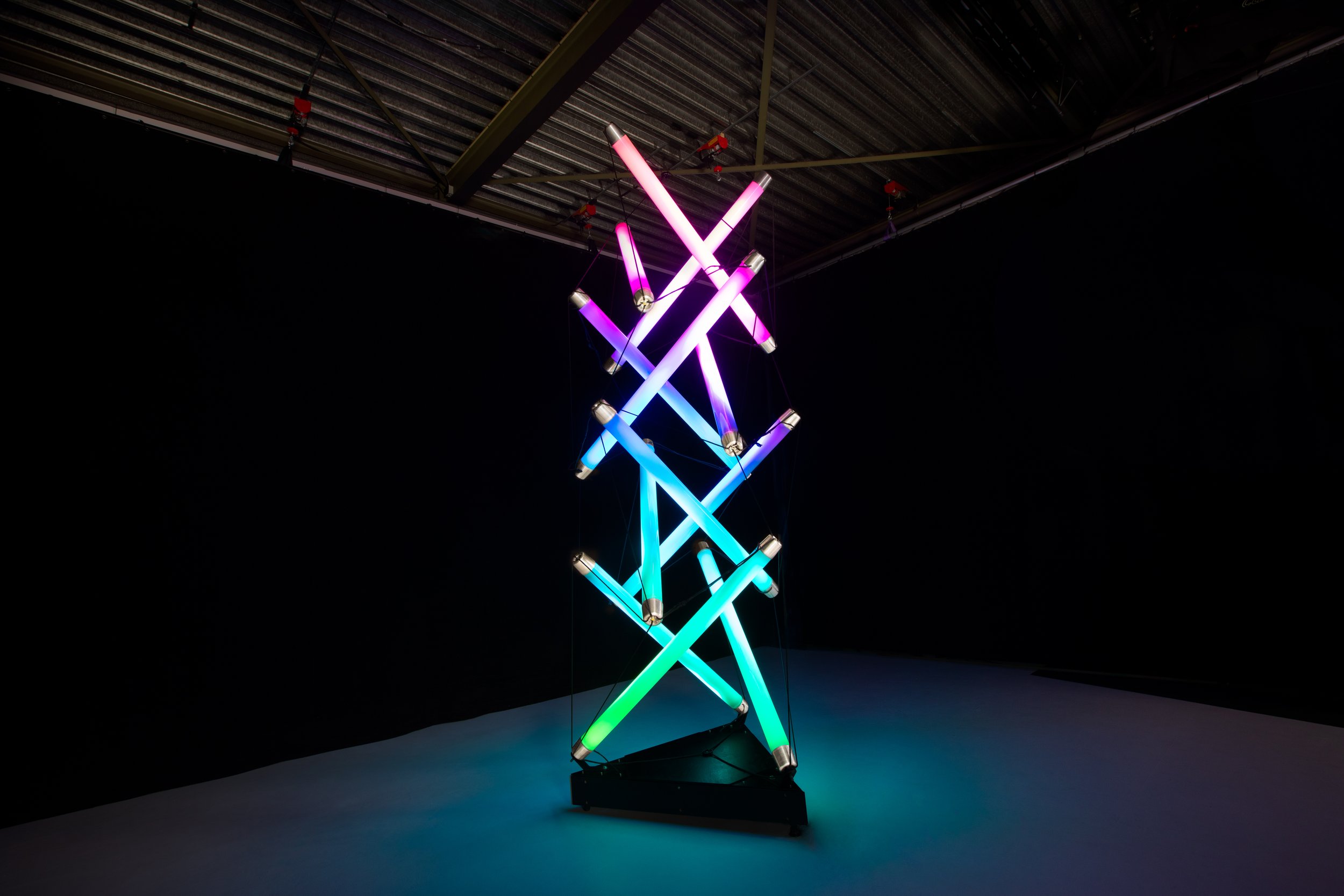

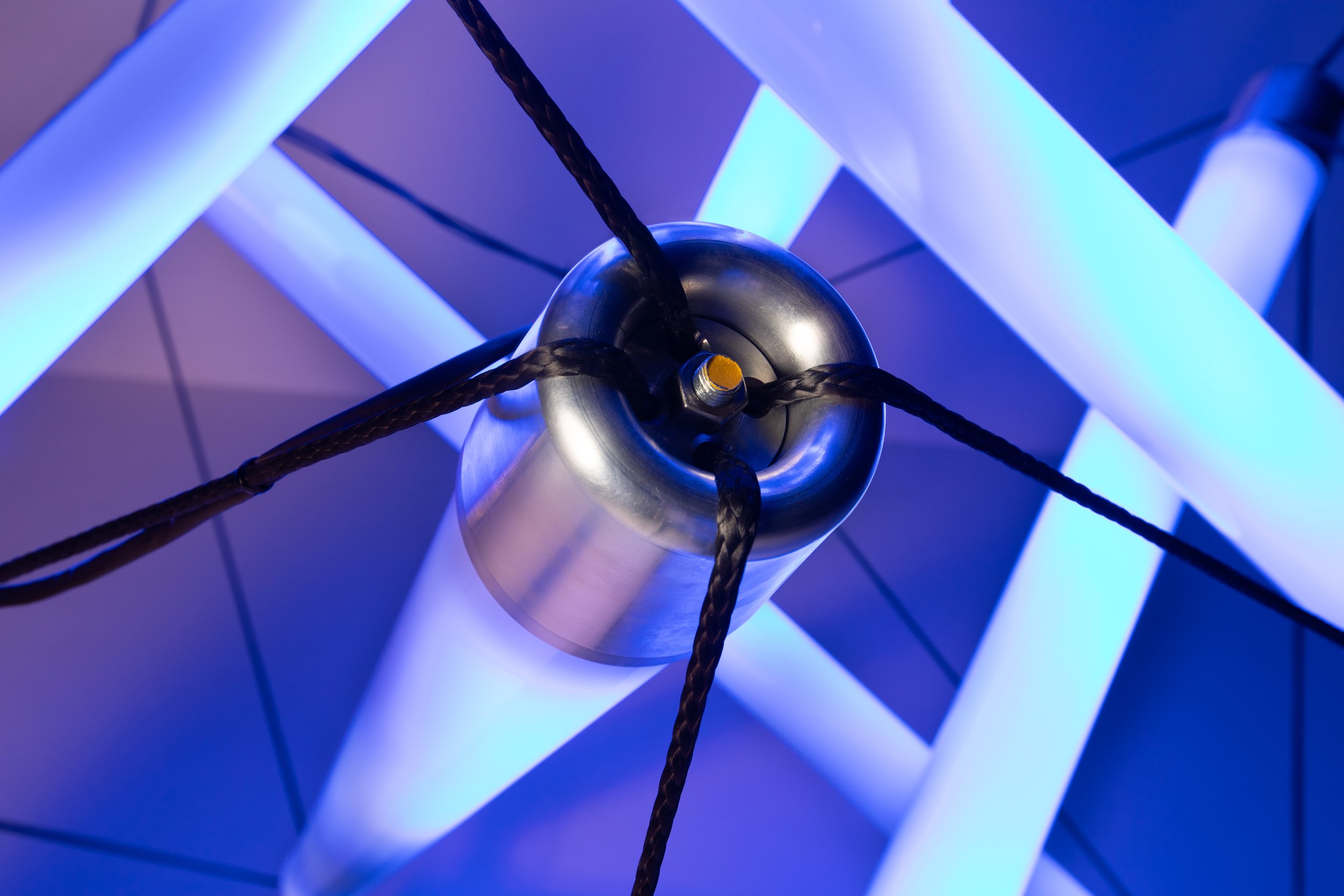

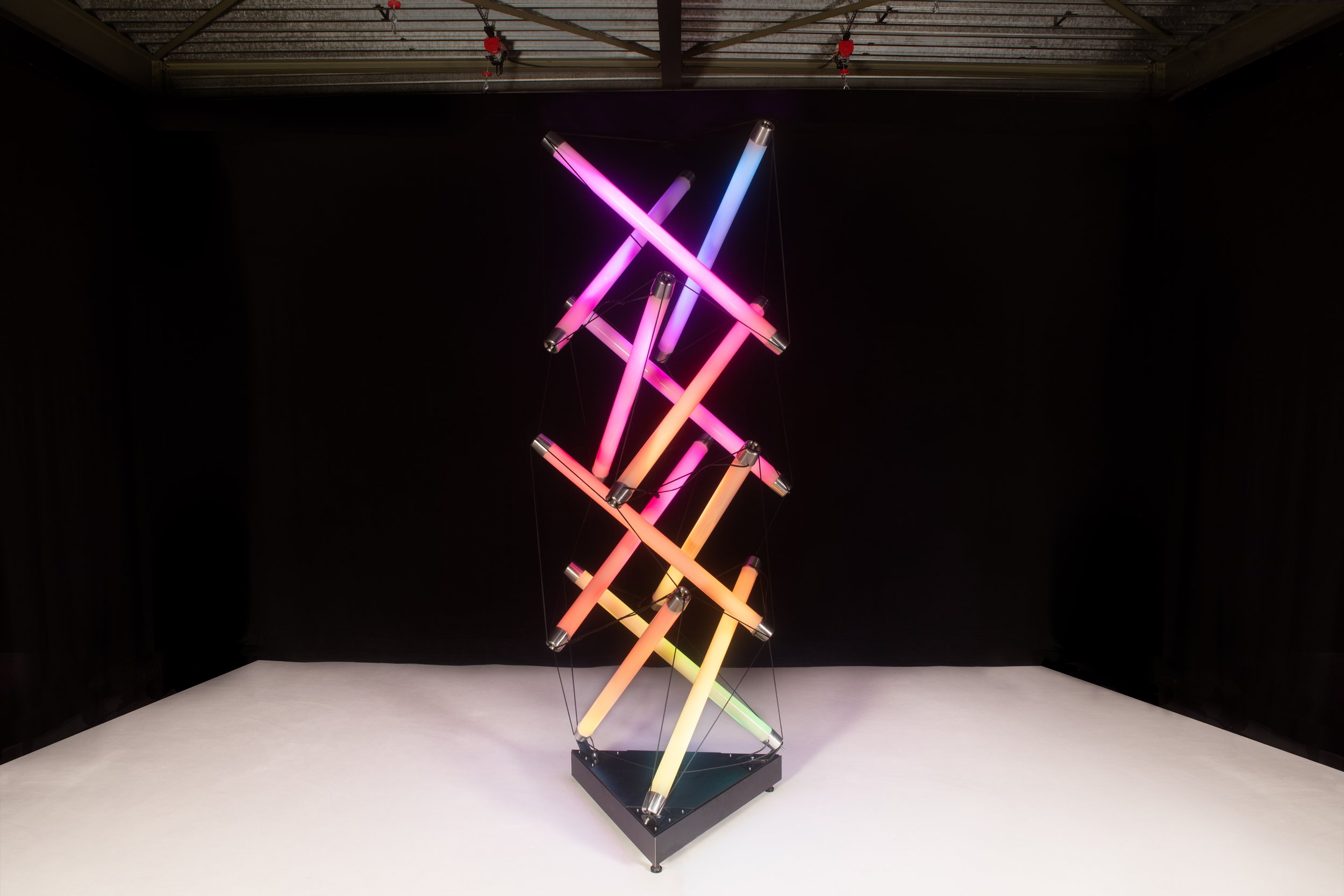
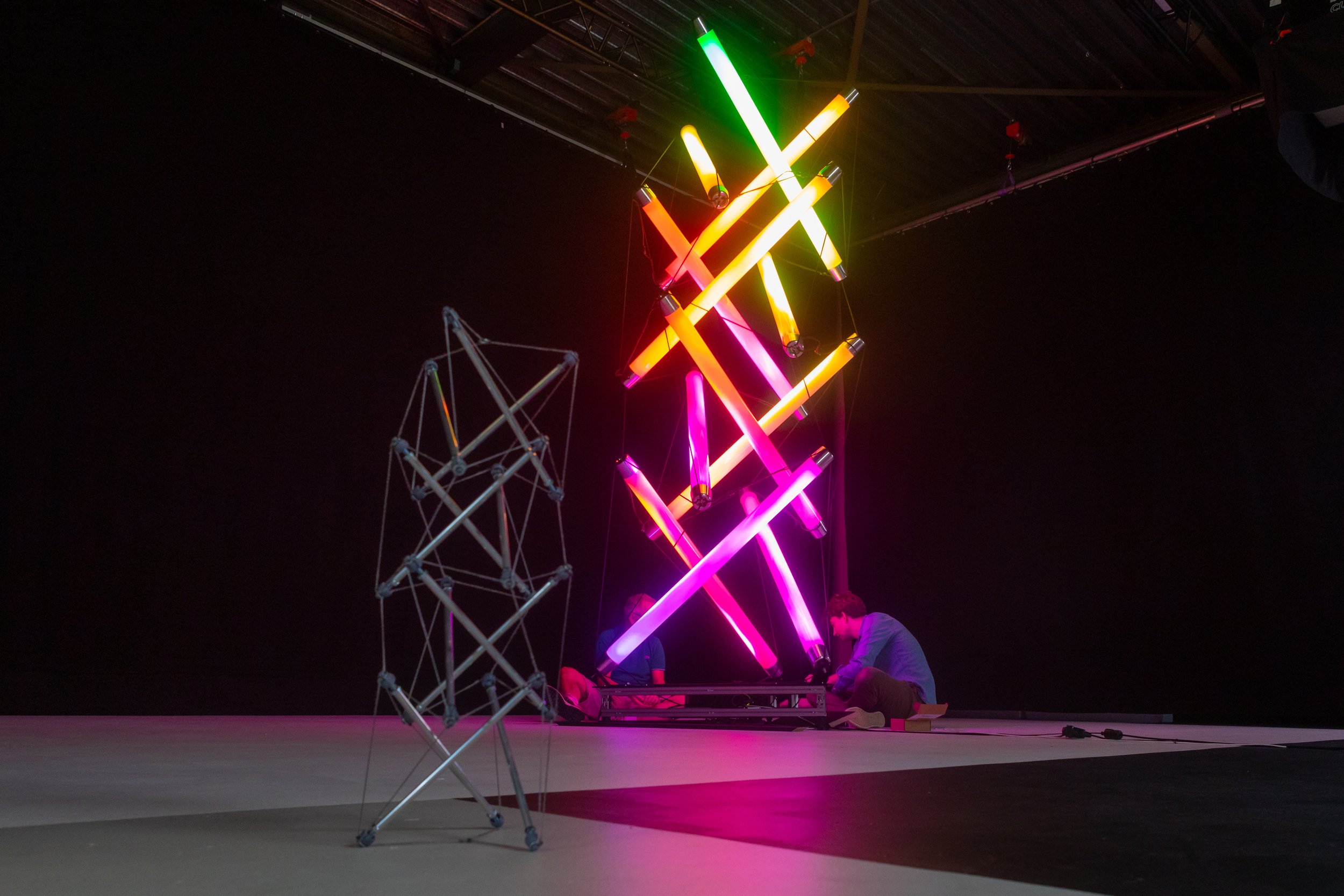
In the 1960s Ken Snelson first explored what could be done (artistically) with structures that were based on using only continuous tension and floating compression, and Buckminster Fuller elaborated the philosophical implications and called it tensegrity.
The Schott Mikado Tower is a Tensegrity structure. It consists of 12 glass tubes loaded in compression and 48 cables loaded tension. Tensegrity structures are not “good” structures in the eyes of a structural engineer: It deforms easily and there is no redundancy, meaning that failing of one element leads to collapse of the entire structure. Tensegrity structures are however, very interesting to look at because of the defined and readable arrangement of forces in the structure.
Schott’s glass Duran tubes are used for the compression elements. They are fitted with an internal coating that serves two functions. Firstly, it holds the glass together in the case of breakage to ensure that the tube can continue to bear compressive force. Secondly, the coating diffuses the light from the LEDs inside the tubes to create a soft and even light effect.
Collaboration:
Project supervision, concept; overall engineering and design of compression members and connectors: Glass & Swinging Structures bv
Design and modelling of the Tensegrity structure: Pretenst
Design of electrical system, lighting and compression members. Production and assembly of compression members: Proliad
Production of glass circular hollow profiles: Schott
Photography: Jeike Wullms
Future Work:

